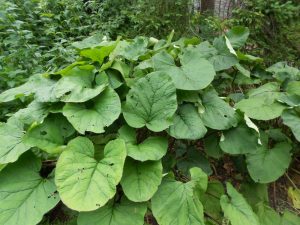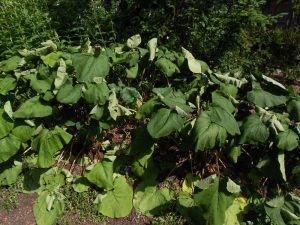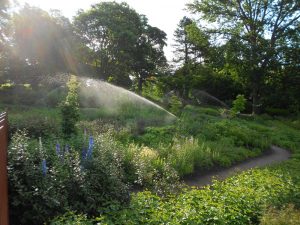Sun wilt causes consternation when, on a warm day, leafy herbaceous stems flop. During the evening as the temperature drops the turgidity of the stems returns. The attached image shows sun wilt in Ligularia fischeri, a large leaved herbaceous perennial, at 3.30pm on Saturday 6th July. A day when the sun shone almost continually. The second image was taken the following morning at 9.00am (Sunday 7th July). No water was given to the plant overnight. On both days we recorded a maximum temperature of 24°C.
If irrigation is required then water sparingly and direct the water to the root zone. Over-watering often results in run off with water flowing into the gutter and then draining away.
If available, use stored water from a water butt rather than mains water. Watering cans are better than standing with a hose at full blast washing the plants and lawn when irrigation is not required. Where hoses are used, direct the water through a mist nozzle or irrigation head with a fine droplet size. The larger the droplet size the more soil splash occurs. Move sprinklers systematically covering the whole border before run off results in streams along paths.
Good cultivation techniques and thought in plant selection should negate the need to irrigate. There is an opportunity in spring to help the moisture content of the soil by topdressing with organic matter.
Ideally water in the evening allowing the soil to retain this moisture rather than evaporate under the glare of the sun. Where possible save precious water for food crop production.



